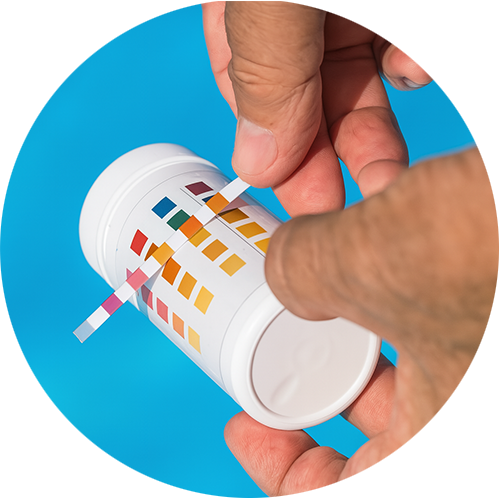
Limits for drinking water: from 6.5 to 9.5
- Without signs
- at low pH occurs corrosion and release of metals ofrom pipelines into water
- at high pH occurs formation of precipitates and of oscale
pH adjustment of water
- The principle of solution: dosing of acids and alkalis, filtration through alcalic mineral materials
Precipitation (rain) water is naturally slightly acidic. Not long ago, when emissions to the atmosphere were not addressed, this was largely stimulated by the pollution and the so-called “”acid rains”” occurred. In addition, acidity may be caused by dissolved carbon dioxide originating in deeper geological layers (for mineral waters). Dissolving of minerals, on the contrary, causes higher alkalinity of water.
Acidic water has a significantly enhanced corrosive effect. It corrodes not only metals but also concrete and other building materials. Heavier metals, which would otherwise only dissolve poorly, dissolve more easily in acidic water and are present in their more toxic form. The pH of acidic water is lower than the allowed range for potable water. The pH value can be increased by dosing of different chemicals (sodium hydroxide, calcium hydroxide, sodium carbonate – soda ash, etc.) Another option is water filtration through easily soluble mineral material.
Alcalic water, on the other hand, promotes formation of incrustations. It builds up lime scale deposits, clogs pipe lines and equipment. Especially when calcium is present in such water. The pH of alkaline waters is higher than the allowed range for drinking water. Reduction can be achieved by dosing acid solutions (hydrochloric acid, sulfuric acid).
